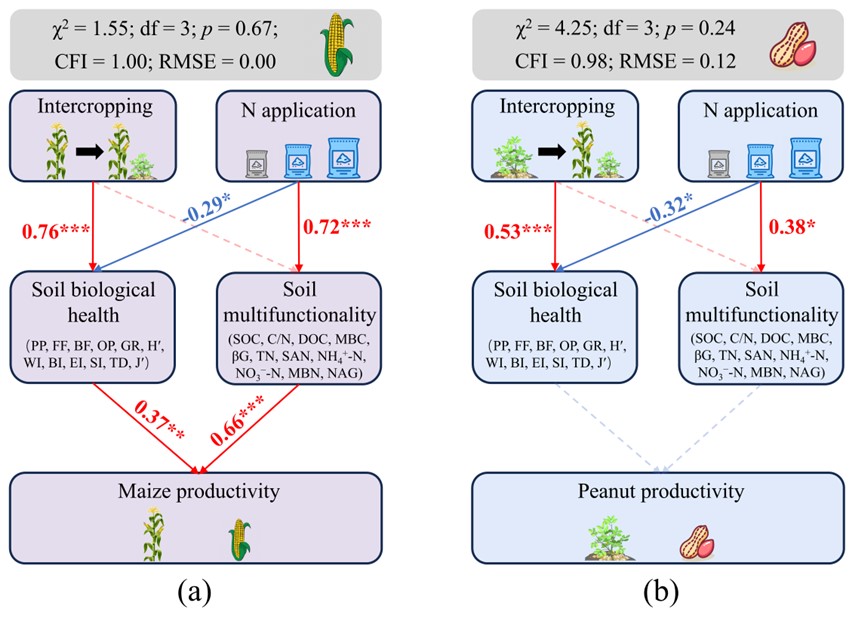Intercropping With Reduced Nitrogen Fertilizer Boosts Soil Health Without Sacrificing Crop Yield
A new study by Chinese scientists suggests that growing different crops together and using moderately less fertilizer can significantly improve soil health without reducing the total harvest, offering a potential solution to the global challenges of food security and soil degradation.
Researchers have found that this method, known as intercropping, can create a win-win for farmers and the environment. The findings, published in the journal Field Crops Research, show that a 20% reduction in nitrogen fertilizer on fields with inter-planted maize and peanuts maintained overall crop productivity while dramatically revitalizing the soil’s ecosystem. The study was led by a team from the Chinese Academy of Sciences' Institute of Applied Ecology in Shenyang.
The two-year field experiment, conducted in Liaoning province, tackled a critical question in modern agriculture: how to maintain high yields while protecting the soil from the strain of intensive farming. The scientists discovered that intercropping—the practice of growing two or more crops in close proximity—led to a significant increase in maize yield, although the yield for the adjacent peanuts was lower. However, the system as a whole remained just as productive as conventionally farmed plots. This was largely due to the "border-row effect," an agricultural phenomenon where plants at the edge of a plot grow more robustly due to better access to resources like light, which increased the overall land-use efficiency by up to 9.3%.
The most striking benefits were found beneath the surface. The study evaluated soil biological health, which refers to the vitality of the community of organisms living in the soil, by focusing on key indicators like nematode populations. In plots where intercropping was combined with reduced nitrogen, soil health improved by a remarkable 78% in the maize zones and 49% in the peanut zones. In contrast, soil multifunctionality—the soil's capacity to support various ecosystem services such as nutrient cycling and organic matter decomposition—was more sensitive to nitrogen levels than to cropping patterns, with short-term changes largely driven by fertilizer use rather than planting arrangement. This suggests that while the soil's living components can recover rapidly, its comprehensive functions may require more time to adapt.
The research underscores that while fertilizer is necessary for crop growth, excessive application can damage the soil's biological health. By combining intercropping with a modest reduction in nitrogen, a sustainable balance can be achieved. This approach supports both crop productivity and ecological stability, highlighting a practical path forward for sustainable agriculture that addresses the dual goals of feeding a growing population and preserving the health of our planet's soil.

Figure 1. The impact of intercropping and nitrogen levels on soil biological health and soil multifunctionality in maize (a) and peanut (b) fields (Image by LI Yingbin).



